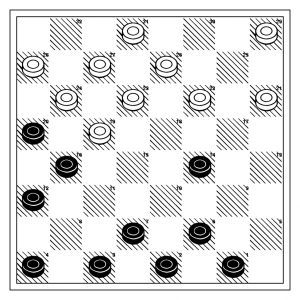I’ve mentioned before that I’m a pretty big fan of Sherlock Holmes. Every couple of years, I dust off my copy of his stories and read them, or load them as audio books onto my iPhone and listen to them all over again. I could go on and on, but let’s just say “I’m a fan”, probably in a way that differs in relatively small degrees from fans of Marvel comics, or DC comics, or Star Wars, or Star Trek.
So, it was with some trepidation that I went to go see the new Christmas release of Sherlock Holmes starring Robert Downey Jr, Jude Law and Rachel McAdam. It’s never easy to see something that you hold in such esteem “reinterpreted”. I’m pleased to say that on the whole, I found their reinterpretation to be reasonable, if not entirely faithful to the original corpus of work. The only truly serious deviation would be the introduction of Irene Adler as romantic interest and as a thief. Irene Adler makes an appearance in Conan Doyle’s first Sherlock Holmes story, A Scandal in Bohemia, which begins:
To Sherlock Holmes she is always the woman. I have seldom heard him mention her under any other name. In his eyes she eclipses and predominates the whole of her sex. It was not that he felt any emotion akin to love for Irene Adler. All emotions, and that one particularly, were abhorrent to his cold, precise but admirably balanced mind. He was, I take it, the most perfect reasoning and observing machine that the world has seen, but as a lover he would have placed himself in a false position. He never spoke of the softer passions, save with a gibe and a sneer. They were admirable things for the observer — excellent for drawing the veil from men’s motives and actions. But for the trained reasoner to admit such intrusions into his own delicate and finely adjusted temperament was to introduce a distracting factor which might throw a doubt upon all his mental results. Grit in a sensitive instrument, or a crack in one of his own high-power lenses, would not be more disturbing than a strong emotion in a nature such as his. And yet there was but one woman to him, and that woman was the late Irene Adler, of dubious and questionable memory.
This basic tenet of the psyche of Sherlock Holmes is tragically violated in this interpretation, where there is a romantic back story between Adler and Holmes. I understand why a screenwriter might choose to introduce this in the interest of marketability, but I think it rather seriously undermines the basic premise of all the Sherlock Holmes stories. There are a number of other subtle variances from the canonical tales, but none seem as serious to me.
But I tried to drop my rigid requirements for faithfulness, and view the movie in the same way that the recent reinterpretation of Star Trek by J. J. Abrams might be viewed: are the characters interpreted in a rich, robust way which isn’t completely at odds with the original characters. And, with the exception I listed above, I’d say “yes”, but not as successfully as was done with Star Trek. Downey Jr. and Law give solid performances, but not inspired ones (we’ve seen better work from both of them). I found Rachel McAdams to be almost a distraction from the plotline, and one that really doesn’t pay off emotionally or even structurally. There are a couple of very odd continuity changes in the movie which I found inexplicable (and unable to explain without giving away too much of the plot), but on the whole, I still enjoyed the film. If you want to see a truly great, faithful adaptation of the original stories, stick to the version starring Jeremy Brett and David Burke:
Sherlock Holmes (1984 TV Series) – Wikipedia, the free encyclopedia
But if you want to see some appealing, attractive and talented actors give decent performance in a decent but not outstanding script, and if you can overlook the deviations from the original, you’ll probably be entertained and amused enough to justify the ticket price.
I give it a 7 out of 10. If I was less of a nutcase over Sherlock Holmes, I might give it another point, but I think that even barring my adoration for the original material, there are some issues with the script and story which kept it from being a stronger film. When I saw <em>Iron Man</em>, I was thinking about why I liked it afterwards, and had a difficult time describing why I enjoyed it, and this movie is similar, except with perhaps a little less compelling action sequences, and an even less convincing love story. Still, it’s an amusing time at the movies.





